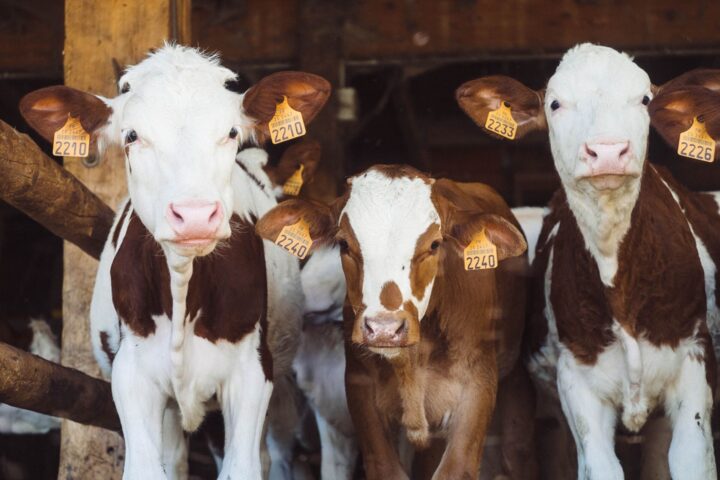Understanding how food, energy, and water decisions affect the thriving of local, regional, and global systems

- Teachers should learn about the FEW systems where they teach and how students and families interact with these systems. Support student learning with an interdisciplinary/integrated curriculum that has social and community relevance. Teach about FEW justice issues in other global contexts. Use teaching approaches that center social and ecological justice and support complex systems thinking.
- School Leaders should support social and ecological justice-focused teaching with community messaging that describes and affirms how this learning reflects widely shared values for student learning.
Food, energy, and water (FEW) are often taught in isolation, but they are all components of interconnected systems at local, regional, and global levels. Further, exploration of FEW in STEM classrooms typically decouples human and natural systems, which ignores how economic, social, environmental and ethical decision-making are entangled. Engaging students in problem scoping practices like causal-loop modeling helps them consider the systemic interrelations of FEW, see these interrelations as part of larger socioecological and sociotechnical systems, and imagine and design for just futures centered on a flourishing living world.
Authors:
BY TODD CAMPBELL, SHONDRICKA BURRELL, SARAH J FICK, IMOGEN HERRICK, VERONICA CASSONE MCGOWAN, XAVIER FAZIO & DOUG LOMBARDI | MARCH 2024
Reflection Questions
- Consider the most pressing local, regional, or global FEW challenges for those in your students’ communities. What human actions and decisions contributed to these challenges for both humans and more-than-humans?
- How can students interrogate historic and ongoing decision-making connected to FEW? Who had/has the power to make decisions that most contributed to these challenges? Who—including more-than-humans— has been most impacted by these decisions?
- How can students imagine and design for a just and thriving social and ecological future for humans and more-than-humans, especially in relation to FEW issues or challenges?
Things to Consider
- Isolated decision-making around food, energy, and water (FEW) can have a reverberating impact on larger socioecological and sociotechnical systems, such as in this Everglades case study.
- Human decisions made about FEW in one place are inextricably linked to and reverberate through seemingly far-off regional and global systems.
- Perspectives beyond those of Western science, including Indigenous worldviews, can help teachers and students recognize that humans are not separate from systems (such as the natural world), but are part of them. According to Indigenous scholars like Stephany RunningHawk Johnson, such perspectives matter because “[w]hen we think about ourselves as connected to all other relations — human and more-than-human — we must make choices that are good for us all.... [This] creates better humans who take the land, water, air, and other living beings into consideration when making decisions both big and small.”
- Decontextualized learning about socioecological issues can promote feelings of hopelessness or anxiety. However, systems thinking and modeling can serve as a medium for speculative storying and restorying possible future worlds that nurture positive affect and hope.
Attending to Equity
- Explicitly recognizing and drawing on relational perspectives inherent in Indigenous worldviews not only orients learners to the interconnected nature of FEW decision-making, it also expands what counts as science in your classroom.
- The FEW-nexus is part of larger socioecological and sociotechnical systems. Orienting to questions of equity, sovereignty, and racial justice around FEW decision-making can draw out and elevate youth commitments to place-based plural thriving.
Recommended Actions You Can Take
- Prepare learners to live and relate differently in the world by addressing complex, interconnected, and transdisciplinary problems such as human-caused changes to Food-Energy-Water (FEW) and larger Earth systems. This will require multidisciplinary/interdisciplinary/transdisciplinary curricula. Work with students and community members to design this curriculum and connect school learning to meaningful FEW issues, places and spaces.
- Use activities like Community Science Data Talks to orient learners to local social and environmental justice FEW issues and community action.
- Use critical engineering pedagogical approaches that center local place-based and community-centered, participatory design principles. These instructional approaches would be grounded in a commitment to relational problem scoping and include causal loop modeling (See pp. 25-36 in Design Pack Systems Thinking) and other associated “practices of a systems thinker.”
- Use strategies like photovoice, self-documentation, and community asset mapping to support students as they develop a critical awareness of local FEW issues and then tell and rewrite stories about their communities and desired possible futures. Ask youth questions like, “What is the new story we would like to tell?” “Who is impacted in this new story?” and “How does this new story promote equity and justice?”
Funding was provided for the National Collaborative for Research on Food, Water, and Energy Education by the National Science Foundation, Grant No. 1856040 and Grant No. 2242276 (ECR-EHR Core Research). Any opinions, findings, and conclusions or recommendations expressed in this material are those of the authors and do not necessarily reflect the views of the National Science Foundation.
ALSO SEE STEM TEACHING TOOLS
STEM Teaching Tools content copyright 2014-22 UW Institute for Science + Math Education. All rights reserved.
This site is primarily funded by the National Science Foundation (NSF) through Award #1920249 (previously through Awards #1238253 and #1854059). Opinions expressed are not those of any funding agency.
Work is licensed under a Creative Commons Attribution-ShareAlike 4.0 Unported License. Others may adapt with attribution. Funded by the National Science Foundation (NSF). Opinions expressed are not those of any funding agency.


 Email Feedback
Email Feedback